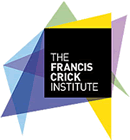About the Project
This 4-year PhD studentship is offered in Dr George Kassiotis’s Group based at the Francis Crick Institute (the Crick).
To protect us against pathogens and cancer, our adaptive immune systems rely on clonal expansion and retention of antigen-reactive lymphocyte (1). Antigen reactivity in T cells is conferred by somatically generated and clonally distributed T cell antigen receptors (TCRs), which recognise specific short antigenic peptides presented on major histocompatibility complex (MHC) proteins on the surface of cells (1).
Recognition of peptide-MHC complexes is critical during several stages of T cell development, survival, effector response and memory formation. Recognition of self peptide-MHC complexes mediates thymic section of developing T cells, thus determining the available TCR repertoire and preventing excessive self reactivity. Nevertheless, a certain degree of TCR reactivity with self peptide-MHC complexes is necessary, as it delivers tonic signals to antigen-naïve T cells, keeping them alive and functional until they encounter foreign antigen. TCR recognition of foreign peptide-MHC complexes initiates the adaptive immune response, by inducing the clonal expansion of T cells bearing the most appropriate TCRs.
In the simplest theoretical model, selection of T cell clones at all these stages is based on the affinity of their TCR for the selecting peptide-MHC complex. For example, thymocytes with too high affinity for self peptide-MHC complexes should be deleted in the thymus, whereas T cells with the highest affinity for foreign peptide-MHC complexes should dominate the immune response (1).
However, the precise property of the TCR that is selected particularly in response to foreign antigen remains incompletely understood. Traditionally, the strength with which a particular TCR binds its cognate foreign antigen was viewed as the primary selective force. Recent discoveries uncovered that, during infection, foreign antigen-reactive T cells, expand according to their reactivity for self, rather than foreign antigen (2, 3).
The identity of self peptide epitope(s) recognised by a particular TCR is typically unknown. For many TCRs expressed by T cells that clonally expand in infection, autoimmunity or cancer the identity of their cognate (self or foreign) peptide epitope is also unknown. A single TCR can react with numerous distinct peptide-MHC complexes and many distinct TCRs can react with the same peptide-MHC complex. Coupled with the enormous diversity of the TCR repertoire, this flexibility in peptide-MHC complex recognition renders the task of determining TCR specificity exceptionally difficult. Recent advances in bioinformatic analyses of large numbers of TCR sequences have produced algorithms that can classify TCRs in distinct specificity groups (4, 5). This first step is expected to lead to further developments, allowing the identification of TCR reactivity based on TCR sequence.
By using a combination of bioinformatics tools and functional studies with cloned TCRs, this project aims to determine the self and foreign peptide reactivity patterns that govern the clonal selection of T cells responding to infection or cancer. At completion of this project, we will have a clear understanding of the properties of selected TCRs, which will inform vaccination and immunotherapy approaches.
Talented and motivated students passionate about doing research are invited to apply for this PhD position. The successful applicant will join the Crick PhD Programme in September 2019 and will register for their PhD at one of the Crick partner universities (Imperial College London, King’s College London or UCL).
Applicants should hold or expect to gain a first/upper second-class honours degree or equivalent in a relevant subject and have appropriate research experience as part of, or outside of, a university degree course and/or a Masters degree in a relevant subject.
APPLICATIONS MUST BE MADE ONLINE VIA OUR WEBSITE (ACCESSIBLE VIA THE ‘APPLY NOW’ LINK ABOVE) BY 12:00 (NOON) NOVEMBER 13 2018. APPLICATIONS WILL NOT BE ACCEPTED IN ANY OTHER FORMAT.
References
1. Merkenschlager, J. and Kassiotis, G. (2015)
Narrowing the gap: preserving repertoire diversity despite clonal selection during the CD4 T cell response.
Frontiers in Immunology 6: 413. PubMed abstract
2. Merkenschlager, J., Ploquin, M. J., Eksmond, U., Andargachew, R., Thorborn, G., Filby, A., Pepper, M., Evavold, B. and Kassiotis, G. (2016)
Stepwise B-cell-dependent expansion of T helper clonotypes diversifies the T-cell response.
Nature Communications 7: 10281. PubMed abstract
3. Persaud, S. P., Parker, C. R., Lo, W.-L., Weber, K. S. and Allen, P. M. (2014)
Intrinsic CD4+ T cell sensitivity and response to a pathogen are set and sustained by avidity for thymic and peripheral complexes of self peptide and MHC.
Nature Immunology 15: 266-274. PubMed abstract
4. Dash, P., Fiore-Gartland, A. J., Hertz, T., Wang, G. C., Sharma, S., Souquette, A., Crawford, J. C., Clemens, E. B., Nguyen, T. H. O., Kedzierska, K., La Gruta, N. L., Bradley, P. and Thomas, P. G. (2017)
Quantifiable predictive features define epitope-specific T cell receptor repertoires.
Nature 547: 89-93. PubMed abstract
5. Glanville, J., Huang, H., Nau, A., Hatton, O., Wagar, L. E., Rubelt, F., Ji, X., Han, A., Krams, S. M., Pettus, C., Haas, N., Arlehamn, C. S. L., Sette, A., Boyd, S. D., Scriba, T. J., Martinez, O. M. and Davis, M. M. (2017)
Identifying specificity groups in the T cell receptor repertoire.
Nature 547: 94-98. PubMed abstract

 Continue with Facebook
Continue with Facebook

